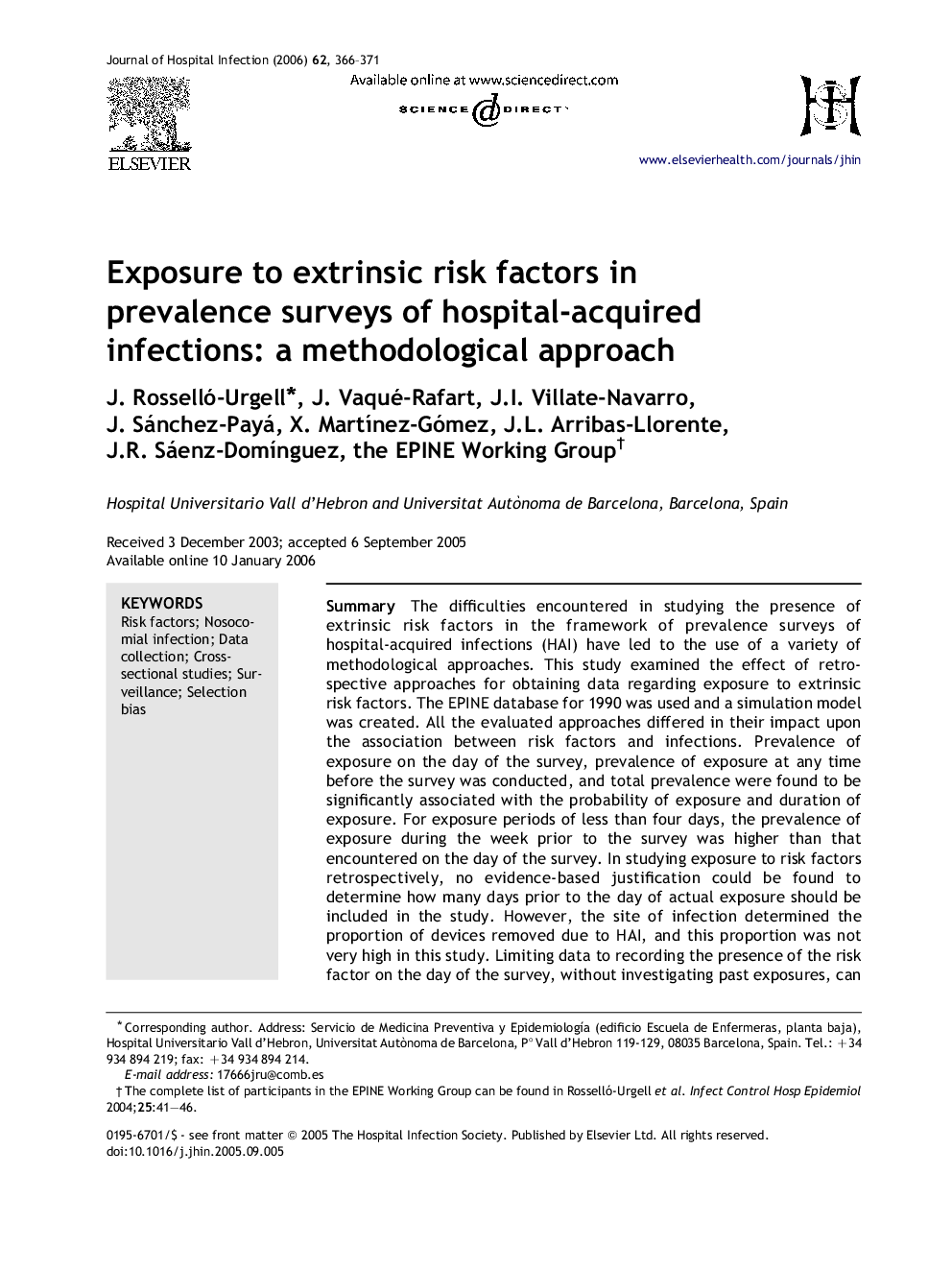| Article ID | Journal | Published Year | Pages | File Type |
|---|---|---|---|---|
| 3374165 | Journal of Hospital Infection | 2006 | 6 Pages |
Abstract
The difficulties encountered in studying the presence of extrinsic risk factors in the framework of prevalence surveys of hospital-acquired infections (HAI) have led to the use of a variety of methodological approaches. This study examined the effect of retrospective approaches for obtaining data regarding exposure to extrinsic risk factors. The EPINE database for 1990 was used and a simulation model was created. All the evaluated approaches differed in their impact upon the association between risk factors and infections. Prevalence of exposure on the day of the survey, prevalence of exposure at any time before the survey was conducted, and total prevalence were found to be significantly associated with the probability of exposure and duration of exposure. For exposure periods of less than four days, the prevalence of exposure during the week prior to the survey was higher than that encountered on the day of the survey. In studying exposure to risk factors retrospectively, no evidence-based justification could be found to determine how many days prior to the day of actual exposure should be included in the study. However, the site of infection determined the proportion of devices removed due to HAI, and this proportion was not very high in this study. Limiting data to recording the presence of the risk factor on the day of the survey, without investigating past exposures, can provide an adequate estimate of the burden of extrinsic risk factors in one-day, point-prevalence surveys.
Keywords
Related Topics
Life Sciences
Immunology and Microbiology
Applied Microbiology and Biotechnology
Authors
J. Rosselló-Urgell, J. Vaqué-Rafart, J.I. Villate-Navarro, J. Sánchez-Payá, X. MartÃnez-Gómez, J.L. Arribas-Llorente, J.R. Sáenz-DomÃnguez, the EPINE Working Group the EPINE Working Group,
